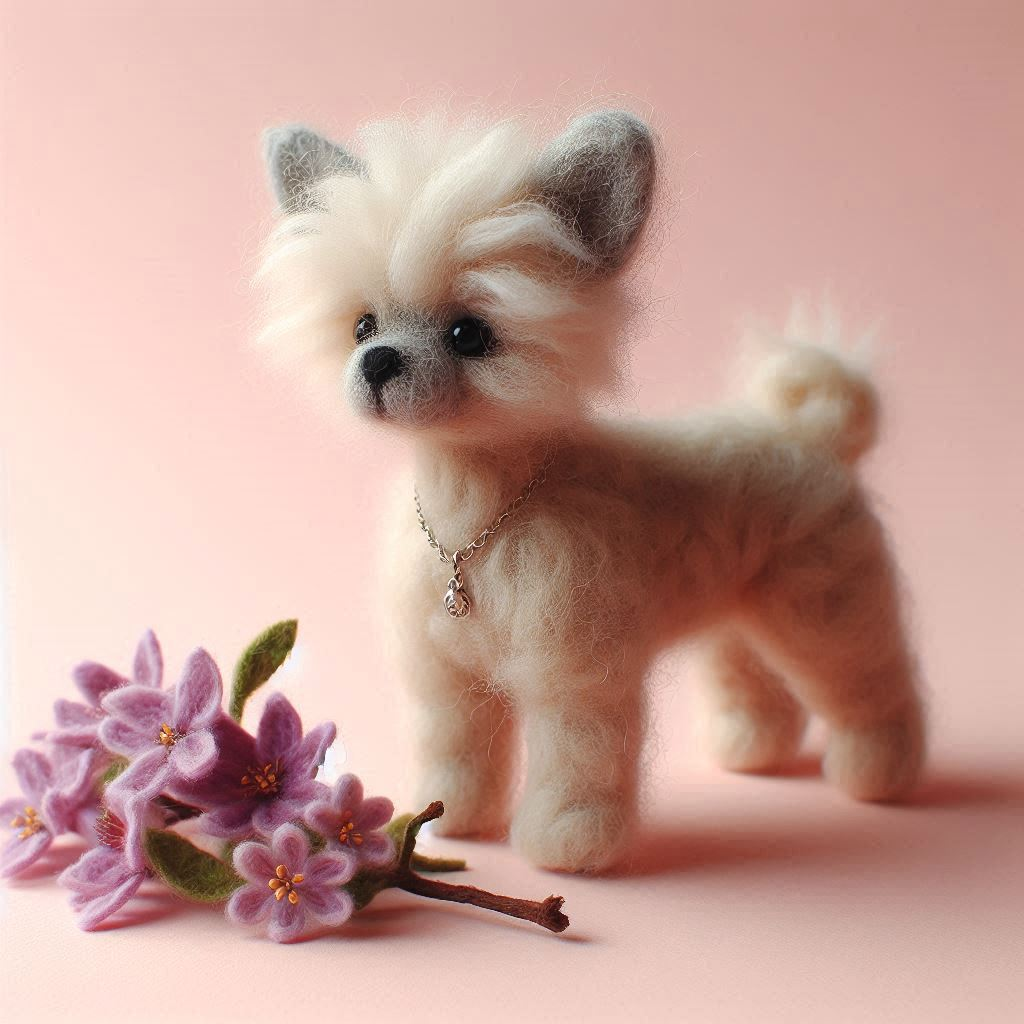Guide of needle felting fur
Posted on
Guide to Needle Felting Fur

Needle felting fur is a technique used to create realistic textures for animals, dolls, and other felted figures. By layering and attaching wool fibres, you can achieve natural-looking fur effects. This guide covers the essential steps, materials, and techniques to help you master needle felting fur.
Materials Needed
- Core wool – Used to build the base shape.
- Fine wool fibres – Merino, alpaca, or other soft fibres for fur texture.
- Felting needles – A mix of medium and fine gauges for different effects.
- Felting mat or foam pad – Provides a stable surface for felting.
- Scissors or blending brush – Helps shape and refine the fur.
Step-by-Step Process
1. Prepare the Base
Before adding fur, create a firm felted shape as the foundation. The surface should be dense enough to hold fibres securely but not too compact, as this can make attaching fur difficult.
2. Select and Prepare Wool
Choose long, fine fibres for a soft fur effect. Blend different shades to create a natural look. You can mix colours by gently pulling and layering fibres together.
3. Cut and Layer Fur Strips
Pull or cut small sections of wool and lay them in thin, overlapping layers. For long fur, roll or pinch the fibres to create natural-looking strands.
4. Attach the Fur
Lightly tack down the fibres using a fine-gauge needle. Work in small sections, stabbing in a straight motion to avoid bending or breaking the needle. Start at the base and gradually build up layers for depth.
5. Shape and Blend
Use shorter strokes with the needle to gently shape the fur’s direction. For fluffier fur, tease out fibres with a soft brush or comb. You can also trim fibres to refine the shape.
6. Finishing Touches
Add extra layers for depth, gradually thinning out the edges. Trim fibres as needed for a refined look. If creating an animal, focus on areas like the face and limbs to ensure a realistic texture.
Advanced Techniques
Directional Felting
To create fur that flows naturally, felt fibres in the direction of hair growth. This technique is useful for animals with distinct fur patterns.
Blending Colours
For a more realistic effect, mix different shades of wool before attaching them. This helps create depth and variation in the fur.
Creating Long Fur
For longer fur, attach fibres loosely and use a felting needle sparingly to maintain movement and softness.
Common Mistakes and How to Avoid Them
1. Over-Felting the Fur
Too much felting can make the fur stiff and unnatural. Use light, controlled strokes to maintain texture.
2. Using Short Fibres
Short fibres may not create the desired fur effect. Use longer fibres for a more natural look.
3. Not Blending Colours
Solid-coloured fur can look flat. Mixing shades adds realism and depth.
Please see The Felt Hubs and Fit to be Loved's video's
